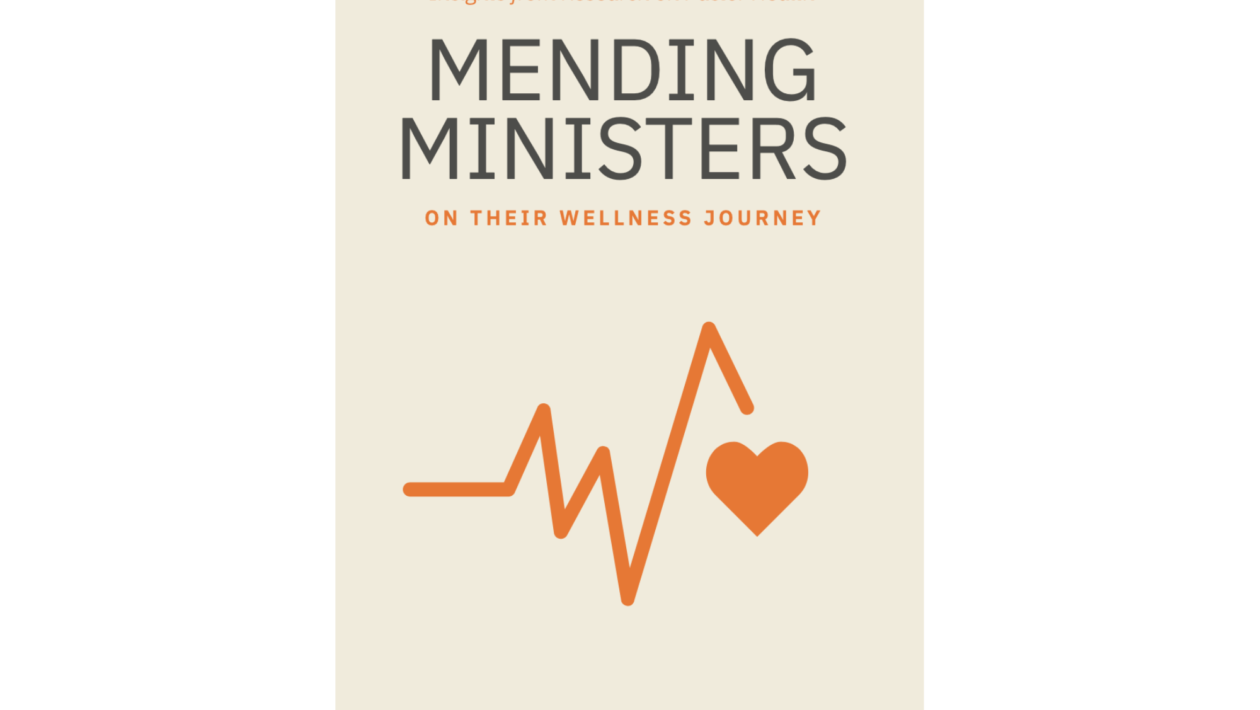Edited by Ivan Williams, Petr Činčala, & René D. Drumm
AdventSource (2022)
Paperback
Reviewed by DUANE COVRIG & JUDITH BERNARD-FISHER
Mending Ministers on Their Wellness Journey is an important read for leaders, especially those in church work. We have created both an executive summary (highlighting a general response to the book) and a more extensive review in order to inspire leaders to get this resource as a way to improve their own health and wellness and to develop organizational strategies to help employees improve their health. We encourage all readers to access free resources related to this book, found at: https://www.nadministerial.com/health.
Executive Summary
This power-packed book bursts with gems of advice and ideas to improve health. It is a must-read for all who engage in ministry. The use of empirically supported data adds an extra layer of credibility and significance to the informative essays. Each chapter touches on critical issues germane to the life of professionals who, for a great number of years, have felt a calling to immerse themselves in Christ-led ministry. Mending Ministers is also written with deep belief that total commitment to ministry also entails an unrelenting commitment to self-care in every dimension of one’s life.
The attention given to mental health stigma, as well as the high-lighting of the critical role of social support and the stark reality of living in an imperfect world with less-than-ideal outcomes regardless of our connection with God, brings relevance to our emerging post-pandemic era. The added chapter on emotional awareness enhances the insights shared on mental health and intellectual engagement, especially when the majority of pastors (historically male) in many cultures are taught to internalize their feelings, thus subjecting themselves to a plethora of ailments and personal challenges. The insertion of personal testimonies adds a distinctive touch to the publication and reinforces the message of multidimensional wellbeing. This publication will hopefully inspire the structuring of more meaningful support systems for pastors and their families.
In-depth Review
In June 2022, a Harvard Business Review article (Pendell, 2022) summed up Gallup’s new State of the Global Workplace report with a distressing title: “Stressed, Sad, and Anxious: A Snapshot of the Global Workforce” (Pendell, 2022). This article acknowledged that COVID-19 contextual factors have made the workplace a difficult place for many. However, it appears that the workplace was becoming more stressful even before that. It also acknowledged that many organizations have wellness programs for their employees, but even these were failing to tackle the full range of challenges to health faced by employees:
But these don’t always take mental health and social relationships—important influencers of physical health—into account. In addition, physical wellness fails to capture the broader dimensions of overall wellbeing: social, financial, career, and community wellbeing. (Pendell, 2022, para. 6)
Pendell’s (2022) article also noted that “fewer than one in four U.S. employees felt strongly that their employer cared about their wellbeing” (para. 7). The full report and the HBR raise questions about the role of work settings in the health of employees and also beg the question of how employees stay employed and stay healthy.
While wellness programs are crucial, Miller, Williams, and O’Neill (2018) point out in their powerful critique of wellness programs that few organizations or individuals deeply attend to the underlying elements that create disease and rob health. Workplace stress, as well as lifestyle choices at work, need to be addressed both personally and corporately to improve worker wellbeing.
This especially becomes a targeted concern for Christian communities and workplaces that seek to follow Jesus’ vision and lead as described in John 10:10: “The thief does not come except to steal, and to kill, and to destroy. I have come that they may have life, and that they may have it more abundantly” (NKJV). How do we cut down on the “stealing, killing, and destroying” aspects of life, work, and relationships, and how do we increase the “abundant living” aspects? Is this a community or personal choice, or both?
This is where Mending Ministers weaves together a wonderful array of viewpoints, research reviews, and strategic life hacks to give individuals (as well as those who love and employ them) effective suggestions for achieving health. Some of the methods are about decreasing the thief’s “stealing and killing and destroying” and increasing Jesus’ healing and abundant living. Williams, Činčala, and Drumm have gathered a large group of pastors, leaders, and clinicians to tackle health and wellness in these nine areas:
- Spiritual
- Physical
- Mental
- Emotional
- Relational
- Financial
- Vocational
- Intellectual
- Societal
Each chapter of Mending Ministers is packed with ideas about improving health in a specific area, connecting it to actual research on pastoral health and scholarship related to that field of wellness. Three testimonials are sprinkled throughout the book to provide narrative “witnesses” of pastoral health changes. Each chapter merits a review here, but we will focus on just three chapters below.
Spiritual Health
Many may be surprised to find that the first chapter of Mending Ministers focuses on the spiritual health of a pastor, as the assumption would be that most pastors are strong in that area. Činčala, Carr, and Page show us that cultivating time and friendship with God is not always easy for pastors driven by ministry demands. They share ways to restore joy and “spiritual satisfaction” (p. 2) into a pastor’s personal life and even into their ministry. They explore dimensions of spiritual health (prayer, Scripture learning, reading and studying, repentance and confession, simplicity, worship, spiritual guidance, celebration, etc.) (p. 3–5). They also connect spiritual wellness to missional spirituality, which is “not about spirituality that makes you a better pastor” but about the realization of the need that “our lives be all about God—revealed, encountered, embraced, pursued, and reflected” (p. 5). They share ways to put joy back into this dimension of pastoral health, and church leaders can help pastors in that process. The authors of this chapter close with practical advice, summarizing scholarship on pastoral ways of being and living, as well as strategies for improving spiritual health.
Relational Health
Another chapter that stood out for us was the relational wellness chapter. Claudio and Pamela Consuegra, César de Leon, and Alina Baltazar give a rich review of relational research and strategies for improving marital, family, and interpersonal health. After reviewing unique challenges to pastoral families, such as frequent and unplanned moves, “fishbowl” pressured living, and isolation, they share ways to set boundaries that protect pastoral marriages and families. Their review of Gottman’s research on marriage and application related to sexuality are insightful and practical. We found that the section on how to support pastors’ children was creative and offered well-researched solutions.
Financial Health
The final chapter we will review here was on financial health. This chapter evaluated basics on financial stress, the role of agreeableness in subverting budgeting and retirement planning, and many practical insights on pastoral personal and home finances. “The data presented suggest that the current wages paid to Adventist pastors results in their perception of insufficient income to support their personal and family expenses” (p. 88). We found the practical advice given throughout the chapter also suitable for educators and others facing salary discrepancies to other professions. However, the most useful aspect of the chapter—beyond strategies—was its systematic emphasis on positive attitudes toward money, gratefulness, and happiness as being central in financial wellness. “It is not how much money we have but how we manage it. We will never have enough if money is our focus (Ecc. 5:10)” (p. 91).
The fact that the chapters cover varied topics reminds the reader of the interrelated nature of pastoral wellbeing. Personal pastoral health is not an individual issue, leaving pastors to fend for themselves. The community dimension of this book speaks to community solutions for wellness that are essential for pastors and their families to survive.
While finishing this review, we discovered that the publishers were running out of the first printing and that another, revised printing is planned. We welcome a revised version that has a larger font, wider margins, better formatting, graphics or pictures, and maybe some “lifestyle advice” diagrams or tables throughout. We also would welcome more consistent editing across the chapters, as some were more polished than others and it showed. A concluding chapter would also help to discuss how these nine areas are integrated into pastoral wellness. But regardless of these hoped-for changes, this book is a welcome addition to the pastor or pastor’s family’s life as a way to mobilize to health and wellness.
References
Miller, R., Williams, P., & O’Neill, M. (2018). The healthy workplace nudge: How healthy people, culture, and buildings lead to high performance. John Wiley & Sons.
Pendell, R. (June 14, 2022). Stressed, sad, and anxious: A snapshot of the global workforce. Harvard Business Review. https://hbr.org/2022/06/stressed-sad-and-anxious-a-snapshot-of-the-global-workforce
Duane Covrig, PhD, is a professor at Kettering College in Kettering, OH.
Judith Bernard-Fisher, PhD, LP, is director of the Counseling and Testing Center at Andrews University.

